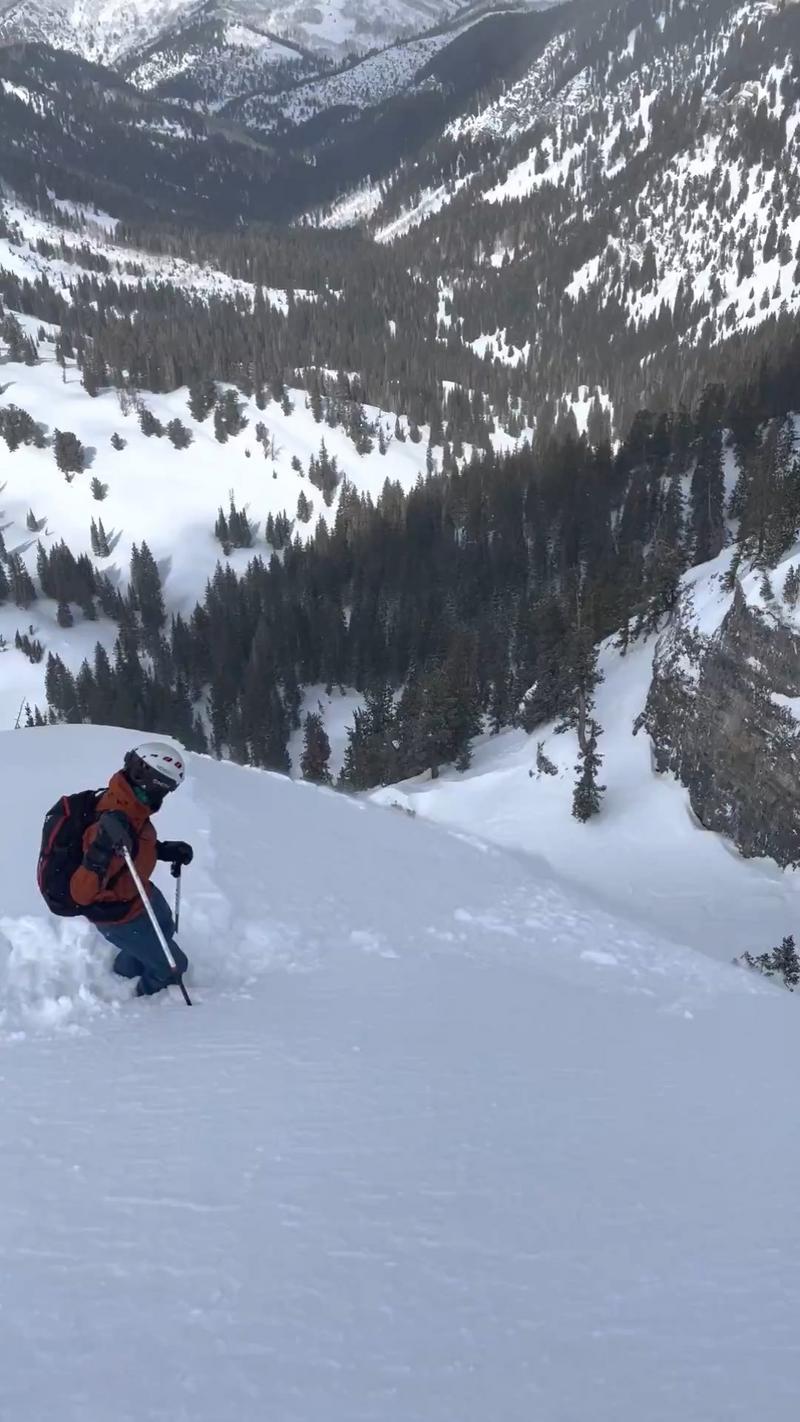This morning, the skies are broken. Mountain temperatures are sitting in the upper teens and low 20s F. Along 9000' ridgelines winds are blowing primarily west-southwest at speeds of 10-20 mph, with gusts between 30-40 mph. At 11,000 feet, the winds are west-northwest gusting up to 50 mph.
Today, one of the stronger storms of the winter will begin to move through the area. A winter storm warning went into effect this morning around 4 AM and will run through 5 AM Thursday. Throughout the morning expect snow showers to increase, turning to periods of consistent snow after noon. By the late afternoon, between 3 PM - 5 PM a strong cold front will move through the area bringing very intense snowfall rates, up to 2.5-3" snowfall an hour. Temperatures will climb into the upper 20s and low 30s F. Winds will remain elevated from the west-southwest blowing 20-30 mph at 9,000' ridgelines, and gusting up to 70 mph at the 11,000' ridgelines. Snow totals by this evening will be between 9-16" of new snow (0.55-1.1" of water).
Overnight, the storm will only continue to intensify. Snowfall remain heavy overnight, and winds will transition more northwesterly. Overnight snow totals could be between 10-20" of new snow (with 0.9-1.5" of water), with the high-end totals being closer to 25" of new snow with almost 2.0" of water.
Storm totals continue to rise, looking to be somewhere between 32-42" of new snow (and 2.10-3.00") by Thursday morning.
Surface conditions have greatly improved with the new snowfall. Out of the wind zone, in protected terrain, the new snow will still be soft and the riding should be enjoyable.
Yesterday, multiple human-triggered avalanches were reported in the backcountry. The majority of these avalanches failed as shallow slabs of wind-drifted snow on the old snow interface.
See one observation from Jaw's yesterday on a Northeast aspect near 10,200'. Easily large enough to knock someone off their feet. Photo (L. Gangi-Wellman)
Find all recent avalanche activity
HERE.







